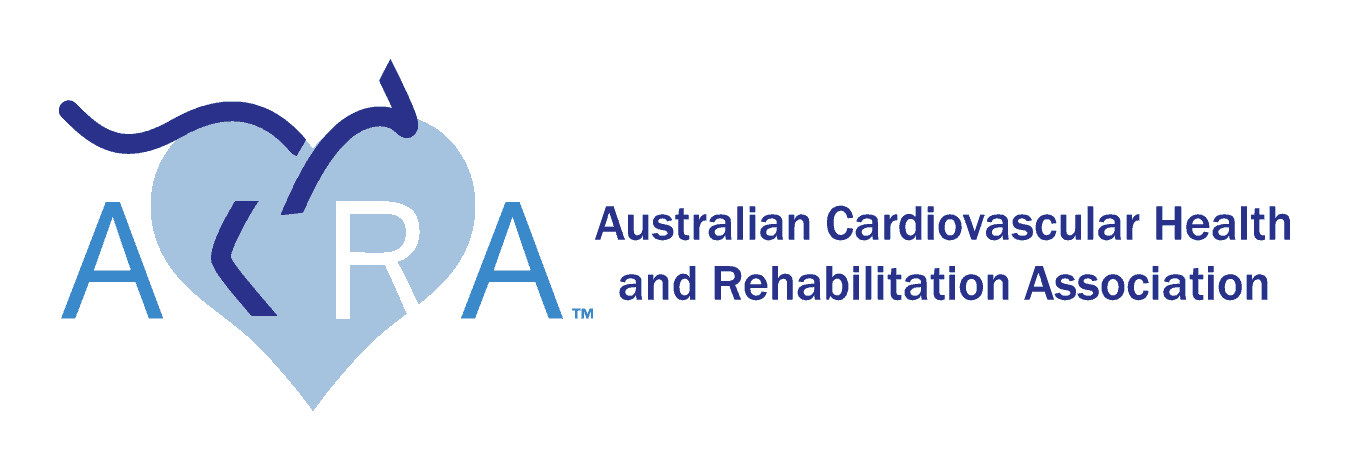A Clinical Guide for Assessment and Prescription of Exercise and Physical Activity in Cardiac Rehabilitation. A CSANZ Position Statement (2023)
In 2023 the Cardiac Society of Australia and New Zealand (CSANZ) convened an inter-agency, multidisciplinary, nationally representative expert panel of Australia's leading exercise-based cardiac rehabilitation clinicians, researchers and health advocates who reviewed the research evidence and completed a paper on the prescription of exercise and physical activity in Cardiac Rehabilitation. ACRA, Exercise and Sports Science Australia, the Heart Foundation and the Australian Physiotherapy Association all endorsed this guidance.
The objective of this position statement is to provide pragmatic, evidence-based guidance for the assessment and prescription of exercise and physical activity by all clinicians working within cardiac rehabilitation (e.g., exercise physiologists, nurses, physiotherapists) in the Australian and New Zealand context. Specifically, the aim is to summarise the assessment and prescription recommendations for aerobic exercise, resistance exercise and physical activity for all patients referred for secondary prevention of their recent cardiac event or a new diagnosis.
Verdicchio C, Freene N, Hollings M, Maiorana A, Briffa T, Gallagher R, Hendriks JM, Abell B, Brown A, Colquhoun D, Howden E. A Clinical Guide for Assessment and Prescription of Exercise and Physical Activity in Cardiac Rehabilitation. A CSANZ Position Statement. Heart, Lung and Circulation. 2023 Jul 27.
Cardiac Rehabilitation Quality in Australia: Proposed National Indicators for Field-Testing
A set of nationally-agreed, internationally-consistent, locally-relevant QIs is urgently needed for Cardiac Rehabilitation in Australa. This priority was confirmed as the first essential step in improving the monitoring of CR across Australia at a Think Tank led by the Australian Cardiovascular Health and Rehabilitation Association (ACRA) and the National Heart Foundation of Australia (NHFA) and initiated and hosted by the South Australian Advanced Health Research and Translation Centre in September 2018.
The purpose of the 10 QIs detailed in this paper is to provide a minimum set of standardised national-level measures that should be collected and reported on by CR programs to determine the quality of delivery and associated outcomes, benchmark performance (both nationally and internationally), and support quality improvement processes.
Gallagher R, Thomas E, Astley C, Foreman R, Ferry C, Zecchin R, Woodruffe S. Cardiac Rehabilitation Quality in Australia: Proposed National Indicators for Field-Testing. Heart, Lung and Circulation. 2020 Apr 30.
ACRA Core Components Paper
In 2014 the Australian Cardiovascular Health and Rehabilitation Association (ACRA) convened an inter-agency, multidisciplinary, nationally representative expert panel of Australia's leading cardiac rehabilitation clinicians, researchers and health advocates who reviewed the research evidence and completed a paper on the Core Components of Cardiovascular Disease Secondary Prevention and Cardiac Rehabilitation.
Woodruffe S, Neubeck L, Clark RA, Gray K, Ferry C, Finan J, Sanderson S, Briffa TG. Australian Cardiovascular Health and Rehabilitation Association (ACRA) core components of cardiovascular disease secondary prevention and cardiac rehabilitation 2014. Heart, Lung and Circulation. 2015 May 1;24(5):430-41.
Making Sense of the Unfavourable Systematic Review of Exercise-Based Cardiac Rehabilitation in the Modern Era: How Should We Proceed?
International guidelines recommend exercise-based cardiac rehabilitation (EBCR) to promote secondary prevention and support recovery following cardiovascular disease (CVD) events. Although the effectiveness of EBCR has been questioned due to poor delivery and participation, the efficacy of EBCR for reducing mortality and morbidity has not been challenged given the Class 1A evidence available. However, in January 2018, BMJ Open published a well-performed and well-reported systematic review that questions the efficacy of EBCR for reducing mortality in the contemporary era. This publication by ACRA encourages clinicians to consider several important caveats when reflecting on the results and conclusions of the review.
Abell B, Zecchin R, Gallagher R. Making Sense of the Unfavourable Systematic Review of Exercise-Based Cardiac Rehabilitation in the Modern Era: How Should We Proceed?. Heart, Lung and Circulation. 2019 Feb 1;28(2):204-6.
Screening for obstructive sleep apnoea in cardiac rehabilitation: A position statement from the Australian Centre for Heart Health and the Australian Cardiovascular Health and Rehabilitation Association
Obstructive sleep apnoea (OSA) is characterized by recurrent episodes of complete or partial upper-airway obstruction during sleep due to the collapse of upper-pharyngeal soft tissue during sleep, resulting in intermittent oxygen deprivation, usually unrecognized by the patient. This position paper presents the views of an expert panel represented by members of the Australian Centre for Heart Health and the Australian Cardiovascular Health and Rehabilitation Association.
Le Grande MR, Neubeck L, Murphy BM, McIvor D, Lynch D, McLean H, Jackson AC. Screening for obstructive sleep apnoea in cardiac rehabilitation: A position statement from the Australian Centre for Heart Health and the Australian Cardiovascular Health and Rehabilitation Association. European Journal of Preventive Cardiology. 2016 Sep;23(14):1466-75.
